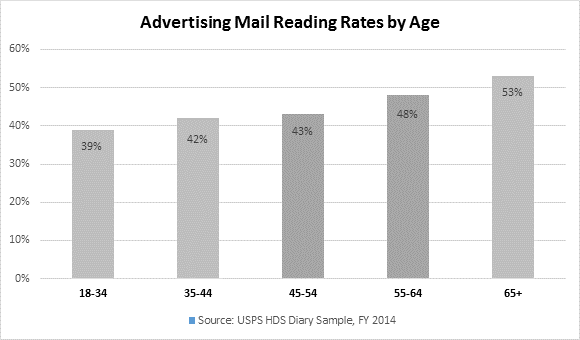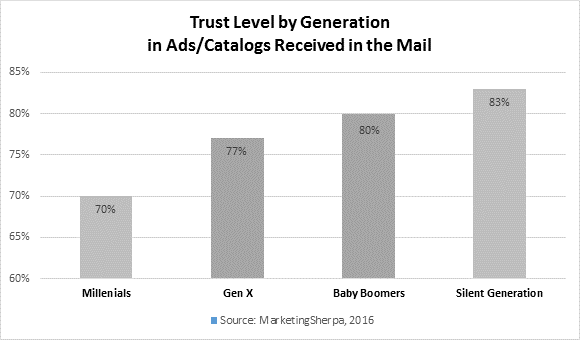
The Pentera Blog
Direct Mail Marketing Effective Among 45 to 64 Year Olds
Gift officers and others involved in planned giving marketing know that direct mail works well with the senior citizens who tend to make up the bulk of their mailing lists. But is print marketing also effective with the next younger age group of donor prospects - those 45-64 who might be included in planned giving mailings?
The answer is yes: Print has been found to be extremely effective with middle-aged prospects. The youngest in this age group were already adults when the Internet began to spread in the mid-1990s, so they grew up without online advertising - and thus remain extremely comfortable with direct mail. It is still considered the top form of planned giving marketing communication to use with those in this age group.
Direct mail reading rates are high for this age group
The most comprehensive research on direct mail is an annual study conducted by the U.S. Postal Service. The Household Diary Study, which has been in existence since 1987, includes an analysis of delivered mail and interviews with thousands of households.
The 2015 study (released in May 2016) is the most recent iteration that looks at age groups (the most recent survey doesn't). The chart below shows reading rates of advertising mail by age. While there is a decline in reading rates as ages decline, the rates for those 45-64 are still quite high (43%-48%).

The study asks households about their "intent to respond" to the direct mail they have read, but unfortunately those findings are not reported by age category (they are reported by income, with a 40% readership rate for those making more than $100,000).
This age group trusts the advertising they receive in the mail
The 45-64 age group currently spans two generations: Those turning 45-52 in 2017 are part of Gen X, while those turning 53-64 in 2017 are among the Baby Boomers.
While there are some significant differences between these two generational cohorts, both generations express a high level of trust in direct mail. The chart below is from a 2016 study by MarketingSherpa, a company that conducts research for marketers. It shows that 80% of Boomers and 77% of Gen-Xers trust direct mail.

Interestingly, both generations say that online popups are the form of advertising they trust the least.
Much more information is available in the Pentera whitepaper, "Generational Marketing for Planned Giving," that can be accessed here.


